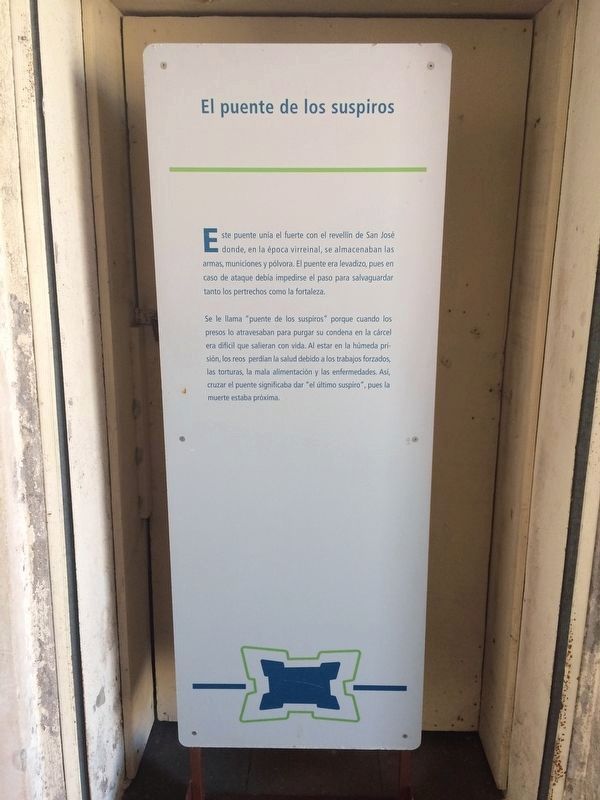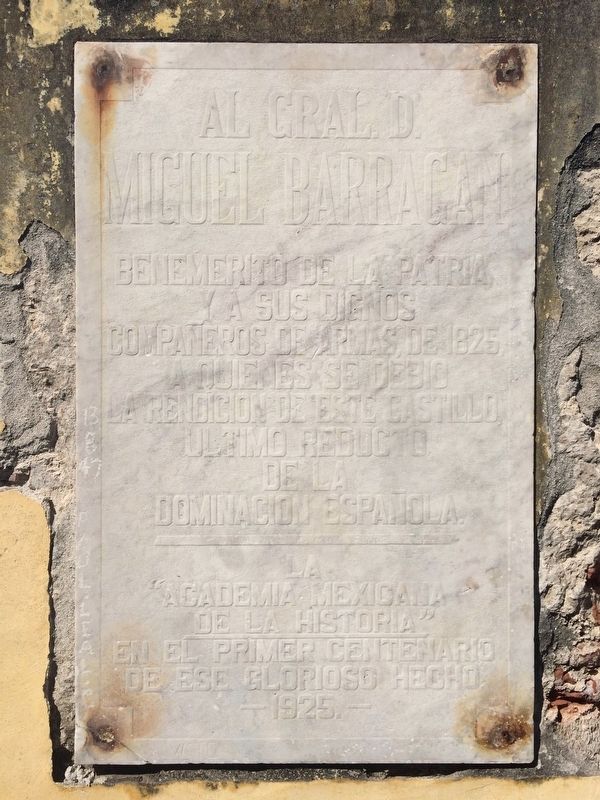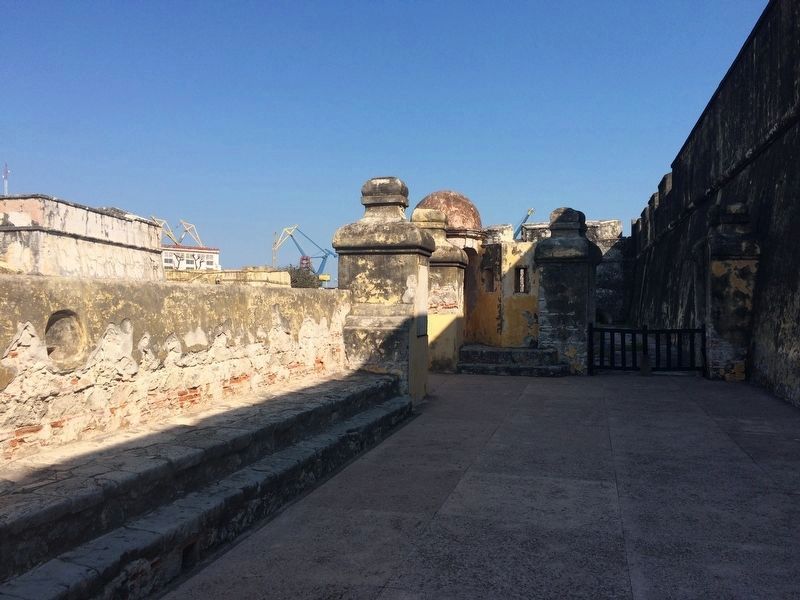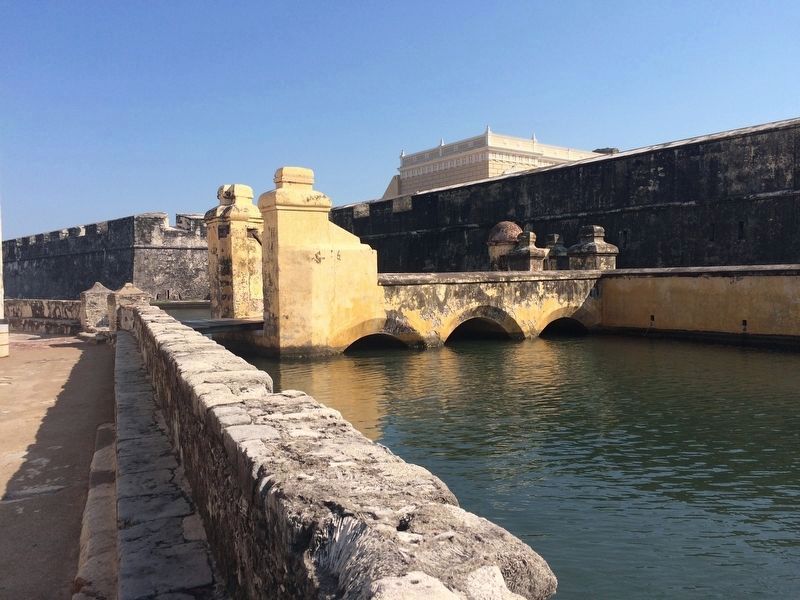Veracruz, Mexico — The Gulf Coast (North America)
General Miguel Barragán
Miguel Barragan
Benemerito de la Patria
y a sus dignos
compañeros de armas de 1825
a quienes se debio
la rendición de este castillo,
último reducto
de la
dominación española.
La “Academia Mexicana
de la Historia”
en el primer centenario
de ese glorioso hecho
-1925.-
Most Worthy of the Nation
and to his illustrious brothers in arms of 1825
who were responsible for taking this fort,
the last stronghold of Spanish domination.
Tribute from the Mexican Academy of History
on the 100th anniversary of this glorious event.
1925
Erected 1925 by Academia Mexicana de la Historia.
Topics. This memorial is listed in these topic lists: Forts and Castles • Patriots & Patriotism • Wars, Non-US.
Location. 19° 12.585′ N, 96° 7.867′ W. Marker is in Veracruz. The marker is on one of the columns right before crossing the "Bridge of Sighs" over to the area used as prison cells at the Fort San Juan de Ulúa. Touch for map. Marker is in this post office area: Veracruz 91700, Mexico. Touch for directions.
Other nearby markers. At least 8 other markers are within walking distance of this marker. Benito Juárez in Prison in San Juan de Ulúa (within shouting distance of this marker); The Governor's House (within shouting distance of this marker); The Prison of San Juan de Ulúa (within shouting distance of this marker); The “Curtain” of San Fernando (within shouting distance of this marker); Patio of the Curtain or Dry Moat (about 90 meters away, measured in a direct line); The Last Stronghold of the Spanish in Mexico (about 90 meters away); The Bastion of San Crispin (about 90 meters away); The Bastion of San Pedro (about 90 meters away). Touch for a list and map of all markers in Veracruz.
Regarding General Miguel Barragán. Miguel Barragán (1789-1836) was a member of the Spanish military and then fought for Mexican independence. As the marker mentions, he is most famous for the final conquest of the Fort of San Juan de Ulúa in 1825 against the last Spanish troops. Unfortunately, only two years later he was accused of treason by President Victoria and jailed in a prison cell at the same fort that he had conquered. He was later exiled from the country, but received an amnesty in 1829. Interestingly, before dying in 1836 he
requested that his body be divided and different parts buried in areas where he had lived or fought during his lifetime. He had requested that his tongue be buried at San Juan de Ulúa, however it is unknown if this request was actually honored.

Photographed By J. Makali Bruton, March 23, 2017
3. An additional nearby marker on the "Bridge of Sighs"
Se le llama "puente de los suspiros" porque cuando los presos lo atravesaban para purgar su condena en la cárcel era difícil que salieran con vida. Al estar en la húmeda prisión, los reos perdían la salud debido a los trabajos forzados, las torturas, la mala alimentación y las enfermedades. Así, cruzar el puente significaba dar “el último suspiro", pues la muerte estaba próxima.
English translation:
It is called the "Bridge of Sighs" because when the ravelin was later used as a prison, crossing this bridge to begin a prison sentence most likely meant that one would not make it out alive. While in the damp prison, prisoners lost their health due to forced labor, torture, poor diet and disease. Thus crossing the bridge meant that one was soon to give their "last breath," for death was near.
Credits. This page was last revised on June 10, 2017. It was originally submitted on June 10, 2017, by J. Makali Bruton of Accra, Ghana. This page has been viewed 198 times since then and 12 times this year. Photos: 1, 2, 3, 4. submitted on June 10, 2017, by J. Makali Bruton of Accra, Ghana.


